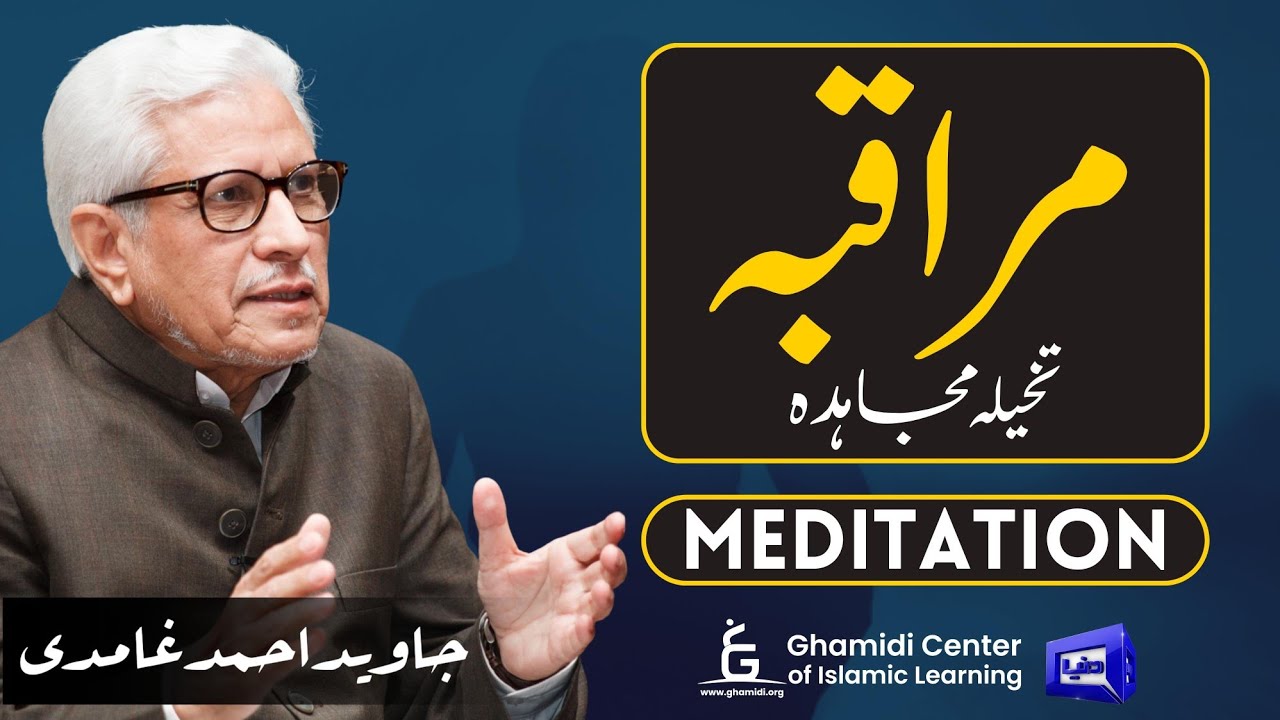What is Vedantic Meditation? | Swami Sarvapriyananda
Summary
TLDRIn this insightful discussion on Vedantic meditation, the speaker outlines the importance of attention training in spiritual practice, emphasizing its necessity across all religious traditions. Vedantic meditation involves a three-stage process: Shravana (hearing and studying the teachings), Manana (reflecting on and resolving doubts), and Nididhyasana (making knowledge a living reality). The speaker also highlights the need for foundational practices like Upasana, which involves worship and mantra repetition, to prepare the mind for deeper meditation. Ultimately, Vedantic meditation aims to overcome obstacles and realize one's true nature as Brahman.
Takeaways
- 😀 Vedantic meditation focuses on training attention, which is essential for spiritual growth across various religious traditions.
- 🧘♂️ The process of Vedantic meditation involves three stages: Shravanam (hearing), Mananam (reflection), and Nididhyasanam (meditation).
- 📖 Shravanam entails systematically studying and understanding Vedantic teachings from texts like the Upanishads and the Gita.
- 💭 Mananam is about reflecting on the teachings to resolve doubts and gain conviction about their truth.
- ✨ Nididhyasanam is the final stage where one assimilates and internalizes the teachings to make them a living reality.
- 🔍 Vedantic meditation addresses two obstacles: Asambhavana (impossibility) and Viparita Bhavana (contrary tendencies) that hinder spiritual progress.
- 🤔 Asambhavana is overcome through understanding that the teachings of Vedanta are not just theoretical but practical and attainable.
- 💡 Viparita Bhavana involves overcoming ingrained habits of identifying with the body and mind, achieved through sustained knowledge and practice.
- 🕊️ Preliminary practices, such as Upasana (worship), are essential to prepare the mind for Vedantic meditation.
- 🌟 Daily meditation should include mantra repetition and visualization of a chosen deity (Ishta Devata) to cultivate the necessary mental readiness for deeper meditation.
Q & A
What is Vedantic meditation?
-Vedantic meditation is a practice that focuses the mind, emphasizing attention training as an essential aspect of spiritual life. It is part of the Vedanta tradition, where the goal is to make philosophical teachings a living reality.
How does Vedantic meditation differ from other meditation techniques?
-While many meditation techniques emphasize mindfulness or concentration, Vedantic meditation specifically integrates the understanding of Vedantic teachings, aiming for the assimilation and realization of knowledge rather than merely achieving a state of relaxation or awareness.
What are the three stages of Vedantic practice?
-The three stages are Shravanam (hearing or studying the teachings), Mananam (reflecting and resolving doubts), and Nididhyasanam (meditating on the teachings to assimilate them into one's life).
What does Shravanam entail in Vedantic practice?
-Shravanam involves systematically studying and hearing the teachings of Vedanta to grasp their meanings and principles.
What is the purpose of Mananam?
-Mananam serves to address doubts and objections regarding the teachings. It involves reflecting on the knowledge acquired in Shravanam to gain deeper understanding and conviction.
Why is Nididhyasanam important?
-Nididhyasanam is important because it allows individuals to make the teachings a living reality. It involves deep meditation on the knowledge to overcome contrary tendencies and fully integrate the teachings into one’s life.
What are the obstacles that Vedantic meditation aims to address?
-Vedantic meditation addresses two types of obstacles: Asambhavana (impossibility obstacles) and Viparita Bhavana (contrary tendencies) that arise from a lifetime of identifying with the body and mind.
What preliminary practice is recommended before engaging in Vedantic meditation?
-Before practicing Vedantic meditation, it is recommended to engage in Upasana, which involves worship and meditation on a chosen deity, typically facilitated through a mantra given by a guru.
How does Upasana prepare the mind for Vedantic meditation?
-Upasana prepares the mind by cultivating devotion and focus, creating the mental clarity and readiness necessary for the deeper insights and practices of Vedantic meditation.
Can you provide examples of techniques used in Vedantic meditation?
-Techniques include various meditative practices discussed in texts like 'Drig Drishya Viveka' and 'Aparokshanabhuti,' which present structured methods for applying Vedantic principles in meditation.
Outlines

هذا القسم متوفر فقط للمشتركين. يرجى الترقية للوصول إلى هذه الميزة.
قم بالترقية الآنMindmap

هذا القسم متوفر فقط للمشتركين. يرجى الترقية للوصول إلى هذه الميزة.
قم بالترقية الآنKeywords

هذا القسم متوفر فقط للمشتركين. يرجى الترقية للوصول إلى هذه الميزة.
قم بالترقية الآنHighlights

هذا القسم متوفر فقط للمشتركين. يرجى الترقية للوصول إلى هذه الميزة.
قم بالترقية الآنTranscripts

هذا القسم متوفر فقط للمشتركين. يرجى الترقية للوصول إلى هذه الميزة.
قم بالترقية الآنتصفح المزيد من مقاطع الفيديو ذات الصلة

Meditation | مراقبہ،تخلیہ،مجاہدہ | Javed Ahmed Ghamidi| M.Hassan ilyas | Ilmo Hikmat | علم و حکمت

Budismo Diet | Luiz Felipe Pondé

RAJA YOGA E ESTRATÉGIAS PARA UMA MENTE SAUDÁVEL - Fabiano Garcia

Dr. K's Approach To Meditation

Alan Watts Opens Up About Religion (thought provoking video)

PODCAST JAUHAR RAMADAN JILID 6 2025 - EPS 6 PENGUATAN MODERASI BERAGAMA
5.0 / 5 (0 votes)
